This is the main poster art I created for the show. The masks featured on the poster are my Grease Monkey and Tony’s Cold Comfort.
Missing Your Face.
I was really excited to be a part of this dual exhibition with Tony Fuemmeler, a maskmaker and puppeteer out of Portland, Oregon. We were approached by Art Center East in 2018 about the idea of a collaborative show, but by the time we got there, circumstances had changed. Per the press release:
“Originally intended as a collaboration between artists on opposite sides of Oregon, the COVID pandemic shifted and enriched the exhibit’s focus as each artist created their masks in response to their changed worlds.”
ARTIST STATEMENT: MATT FAGAN
I’ve been a cartoonist and a painter for most of my life, but I only became a maskmaker because I love Halloween. Creating characters on a page or a canvas has always been fun, and making masks allows me to do that in a tactile, intimate way that’s still pretty new to me as an artist. Working with paper mache gives me the opportunity to challenge myself, and explore the limits of the medium. All of my masks in this show are made from paper mache, with a few material accents such as window screen, magnets, and fake fur.
The show with Tony Fuemmeler was proposed as a collaboration between two maskmakers on opposite sides of Oregon, significant because of a perceived West/East cultural divide in the state. We weren’t sure how this collaboration might take shape, but Tony and I decided to begin by seeking inspiration from our respective environments. For me, that meant La Grande and the mountains.

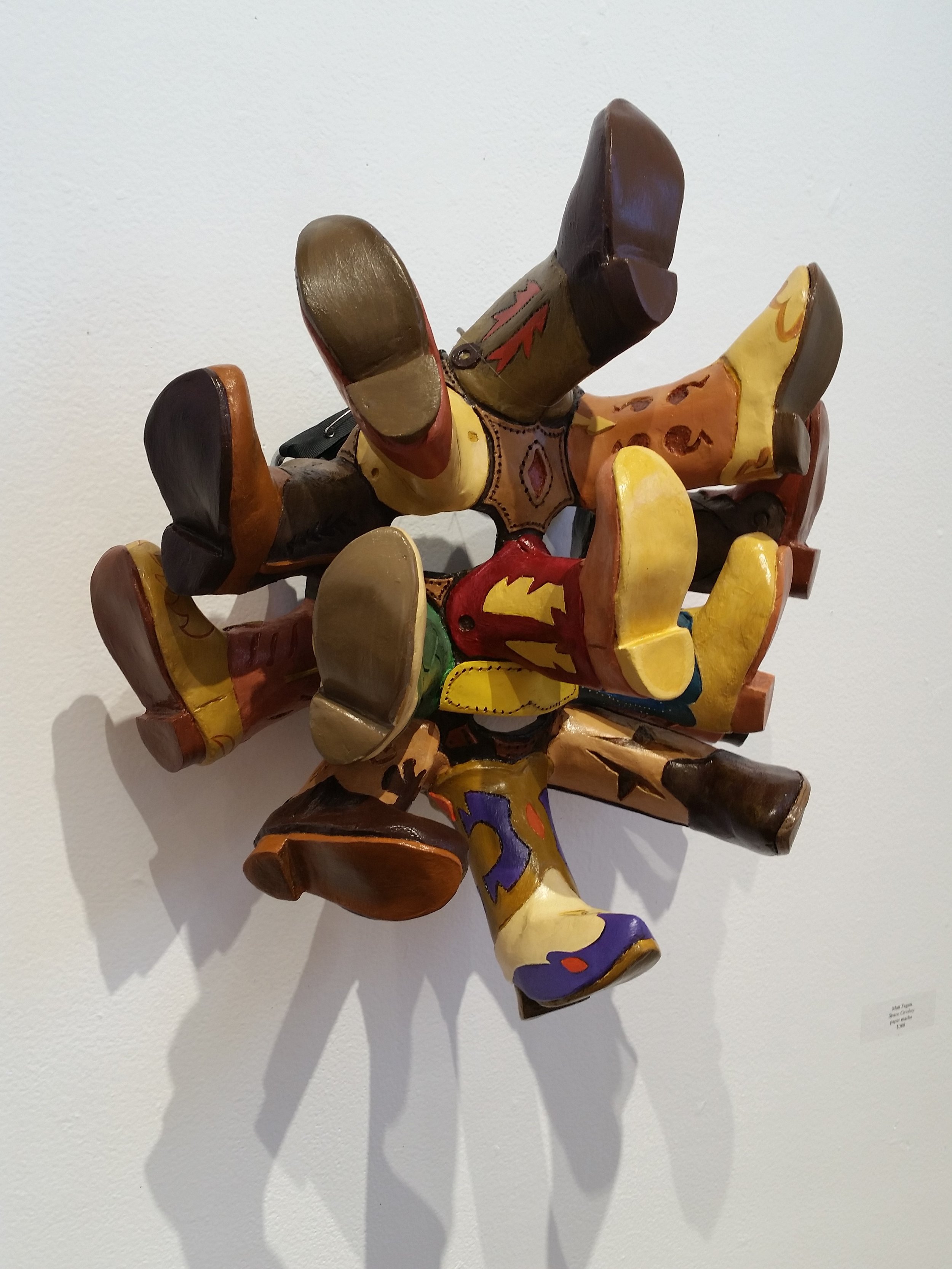

Up to now, making and wearing masks had always been a way of playing. Designing masks based on place, for a gallery show, would be a completely new experience. I was interested to see how that exploration of place might illuminate, or obscure, the idea of division.
When I began to conceive a series of masks that were a direct response to living in Eastern Oregon, the inspiration I sought was joy and love. I was raised in rural Oregon, but spent half my life in Chicago, and then moved to La Grande seven years ago. This is my home now, and I am still finding my place here, so this project was a way for me to actively examine the things I love about La Grande. But the pandemic changed everyone’s trajectory, and instead of coming together, Tony and I were isolated like everybody else.
In isolation, making masks became my primary coping strategy for living through both a pandemic and an extremely turbulent political climate. Instead of processing world events through this project, I was determined to find things to get excited and laugh about – because to me, that’s what was compelling about the work. I’m motivated by the challenges, but especially by the potential for humor. My masks tend to be funny because, most of the time, the world isn’t funny, and I feel like I need to do something about that. Given the events of the past year, having a process that constantly focused on positive aspects of my environment was probably more helpful and healthy than even I realized at the time!

“My masks tend to be funny because, most of the time, the world isn’t funny.”
My group of masks represent a funhouse-mirror reflection of La Grande, which is why I’m presenting them as the population of an imaginary place called Big Town. I am inviting the audience to meet creatures and folks who are familiar but mysterious, hopefully funny, and maybe a little more magical than they were expecting.
This series has allowed me to explore my connection to Eastern Oregon in a number of interesting and unexpected ways, and expand my ideas of how place is defined and represented. Finding ways to express those ideas as masks has been at times oblique, often surprising, and I hope that viewers come away from the show having at least some small fraction of the fun I had in making it.
Matt Fagan, 2021

“How can we find ways to fully express ourselves when we cannot rely on the face to do the work?”
ARTIST STATEMENT: TONY FUEMMELER
Much of my mask work has been created in and for the theatre. Although this new series of work is not predicated on the technical considerations for a performer, I remain curious about how the mask transforms a wearer—in their body, their breath, their feelings. What is newly revealed by this partial concealment? How can we find ways to fully express ourselves when we cannot rely on the face to do the work?
Additionally, I am interested in exploring place as a lens through which to consider the world. This exhibit will open 15 years after I moved to Oregon… almost to the day. I’ve lived lots of places in my life and have traveled in and outside of the country a fair amount. This range of experiences has me wondering a lot about what constitutes “place”. Is it geography? Ecosystems? Latitude & Longitude? Weather systems? Flora and Fauna? People? Cultural systems? Attitudes & Approaches? Nothing seems definitive.
I also think about how I carry place around with me wherever I go: in memories, in how I see things, in my perceptions of weather, in the amount of space that feels good around me, etc. I am struck when I witness humans creating a mental separation of ourselves from the spaces we live in, rather than having a dynamic and relational interconnectedness with place.



Some of my work in the exhibition explores the reconnection of person and place within the object of the mask. I’m exploring layers and superimposition as ways of showing the places in this part of Oregon I carry as a part of myself. I suppose this also speaks to the interior emotional spaces I have been occupying more during the pandemic. The two bodies of mask work here reflect not just facts of location, but also how place moves, transforms and reveals us.
Tony Fuemmeler, 2021

BIG TOWN
Zinester at Heart.
As the exhibition date was drawing near, and I was spending more time surrounded by these dozens of masks, I started to think of them more as characters than objects. I was reflecting the town that I live in, and as a result, some of the masks began to feel like the creatures and townspeople who lived in that reflection. I decided to write and draw a field guide, like a notebook kept by a wandering explorer who happened on the town, and then publish it as a zine. The result, Welcome to Big Town, would be made available for free to people visiting the exhibit.


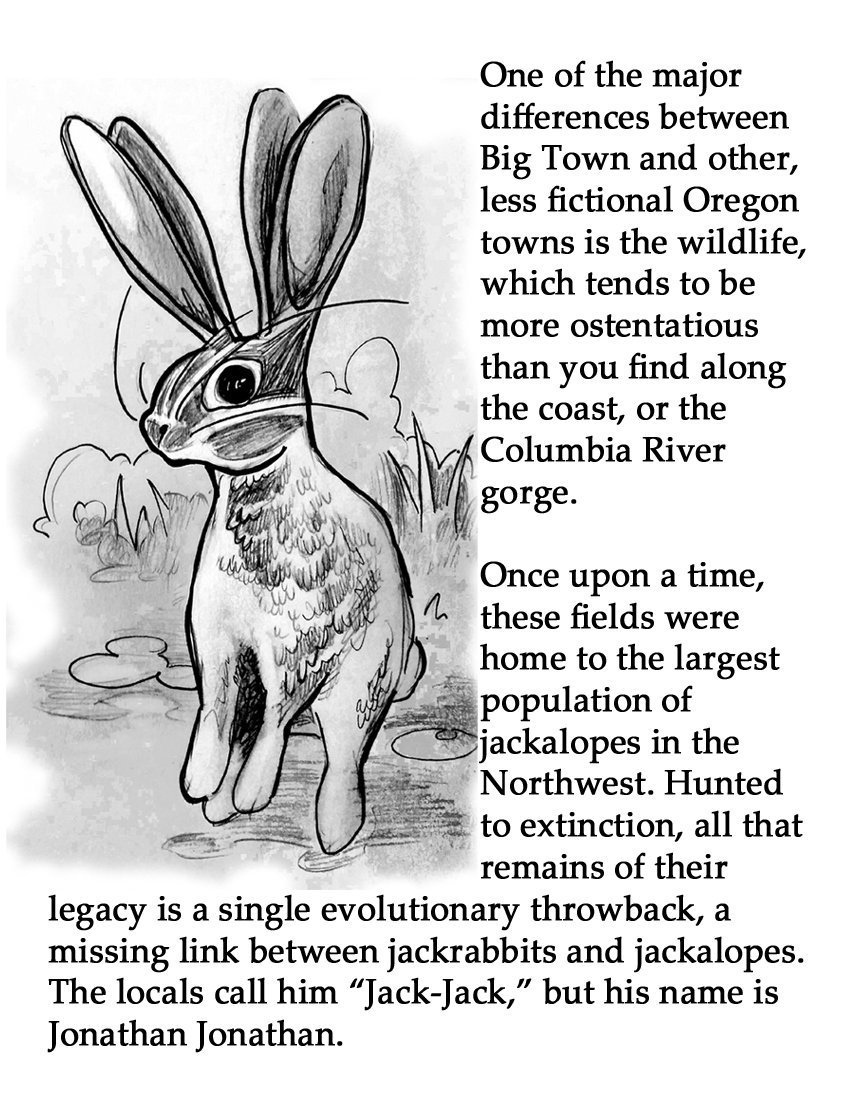





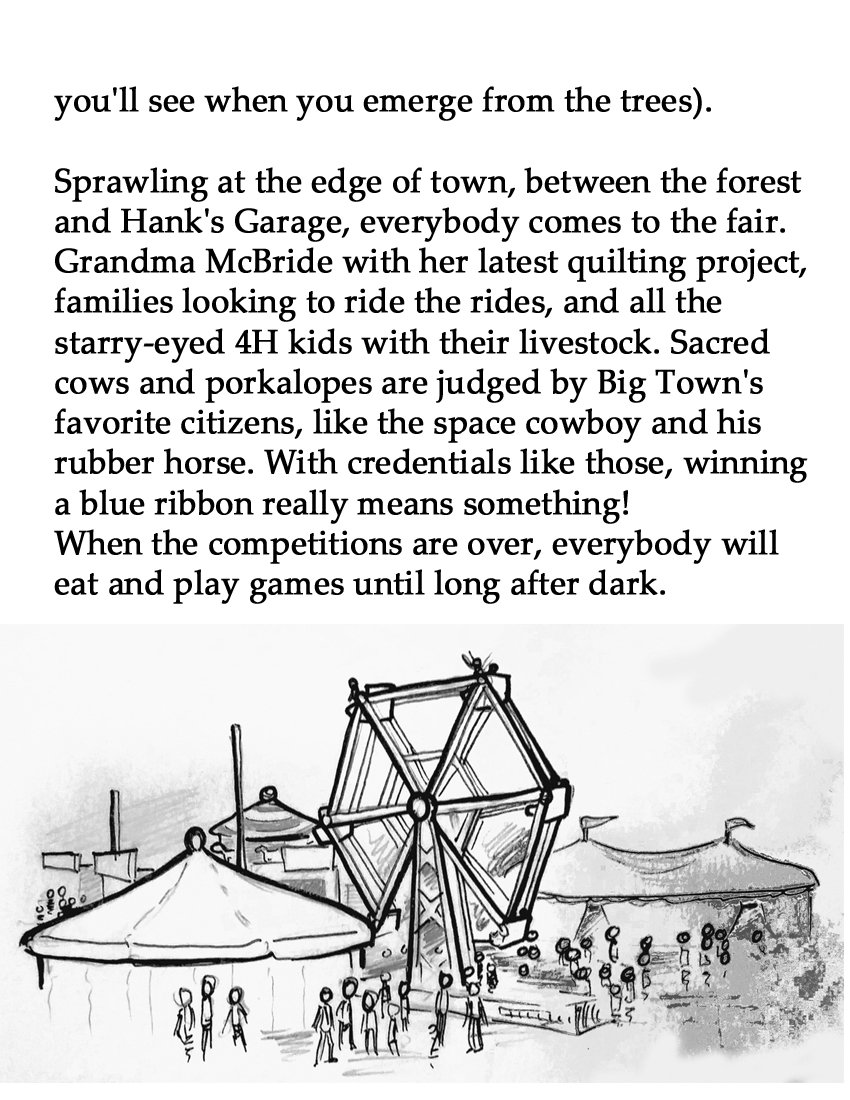

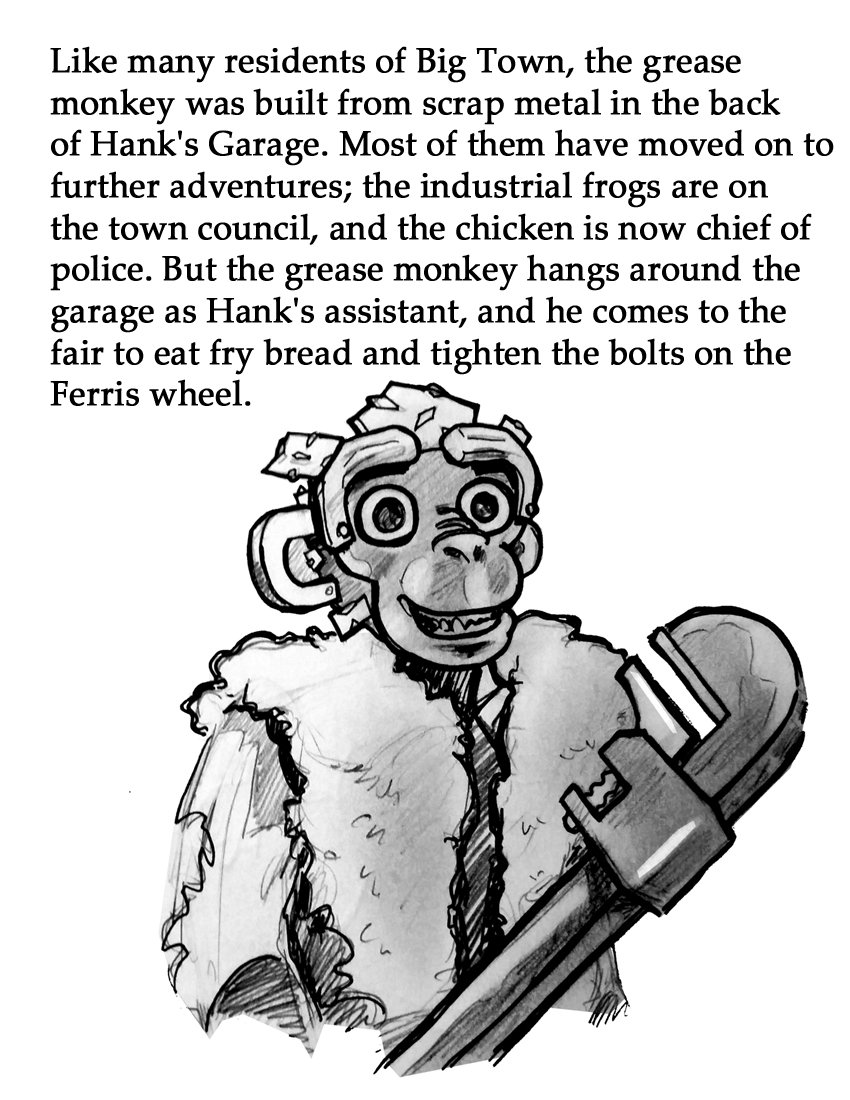

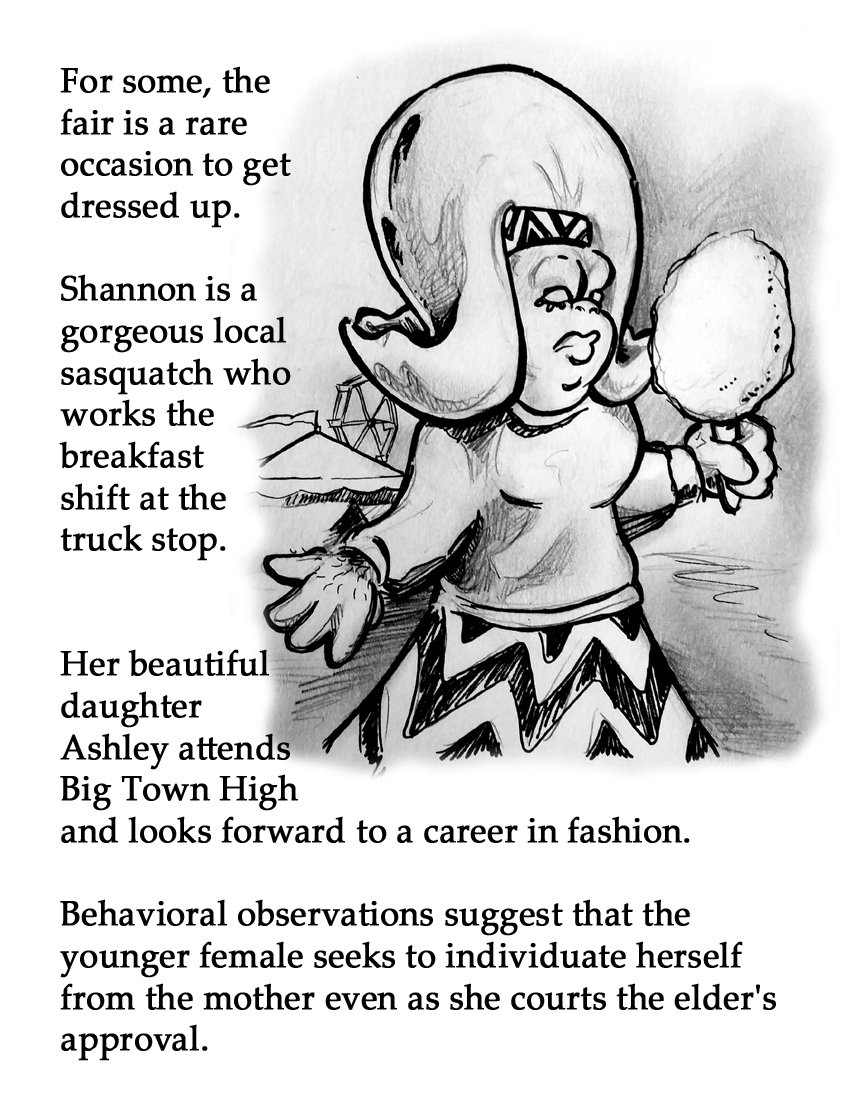





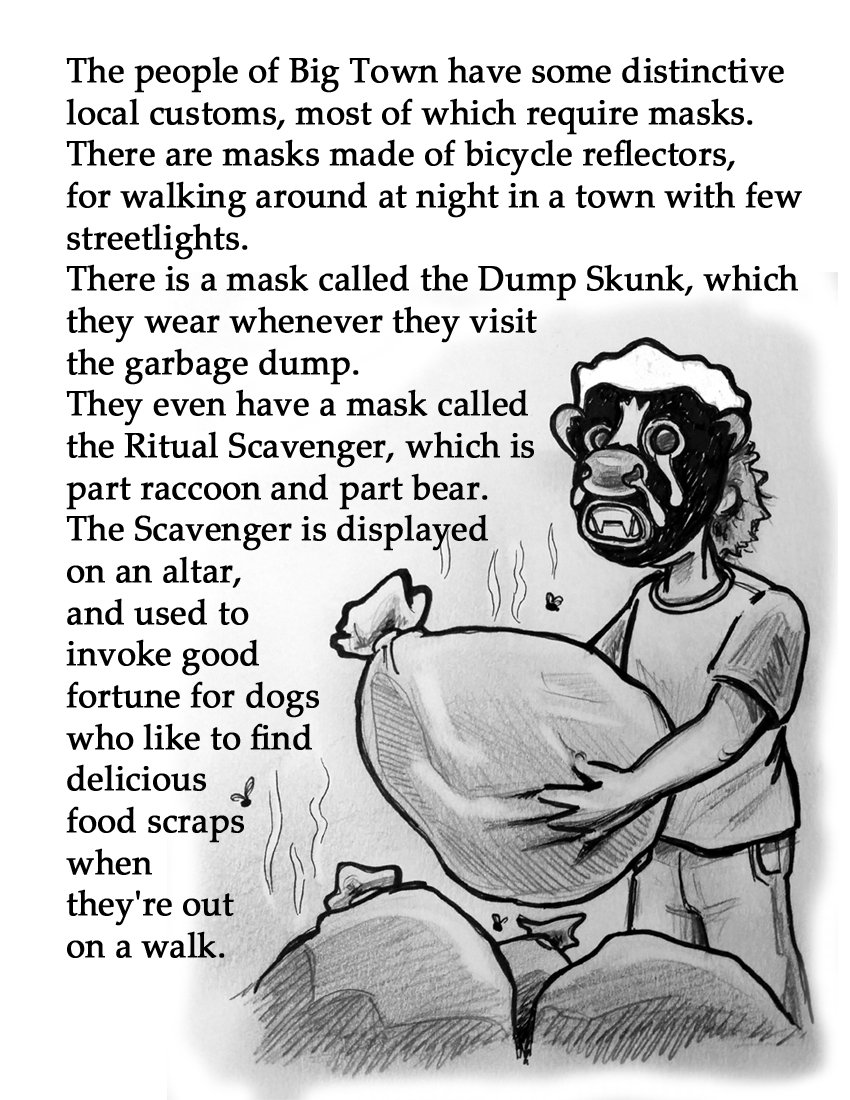




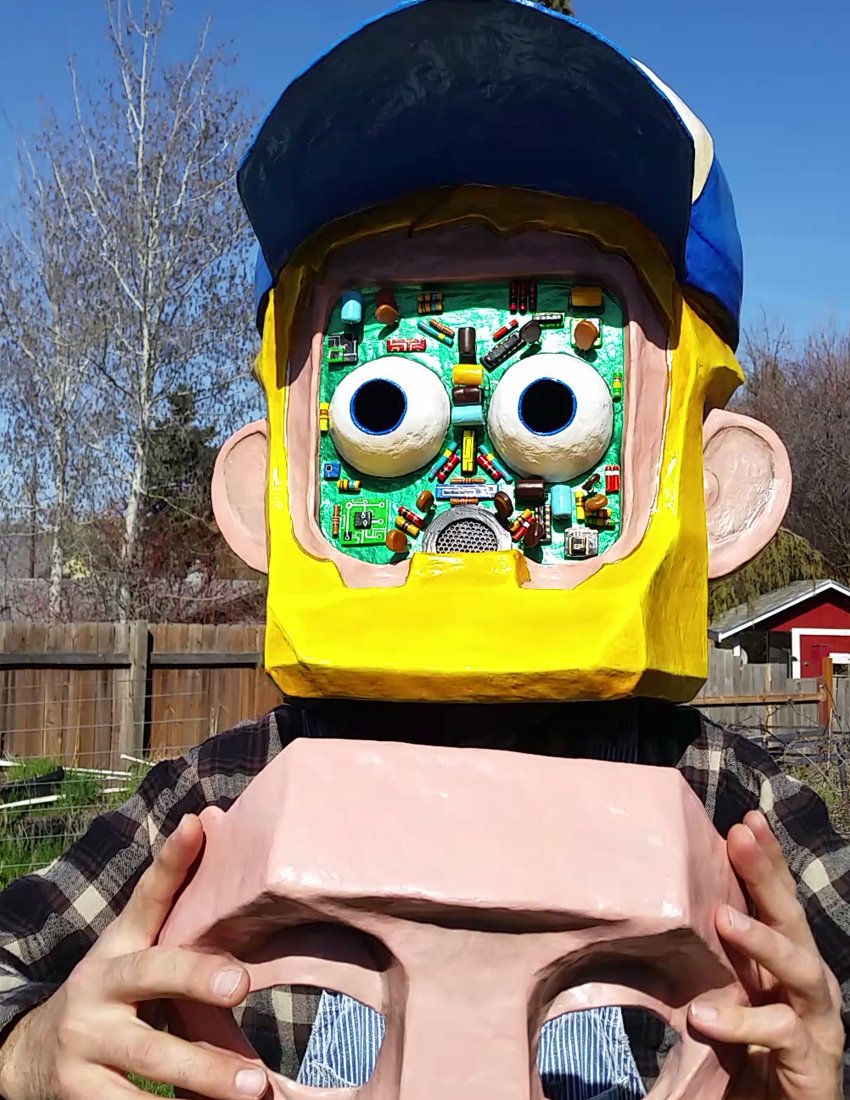
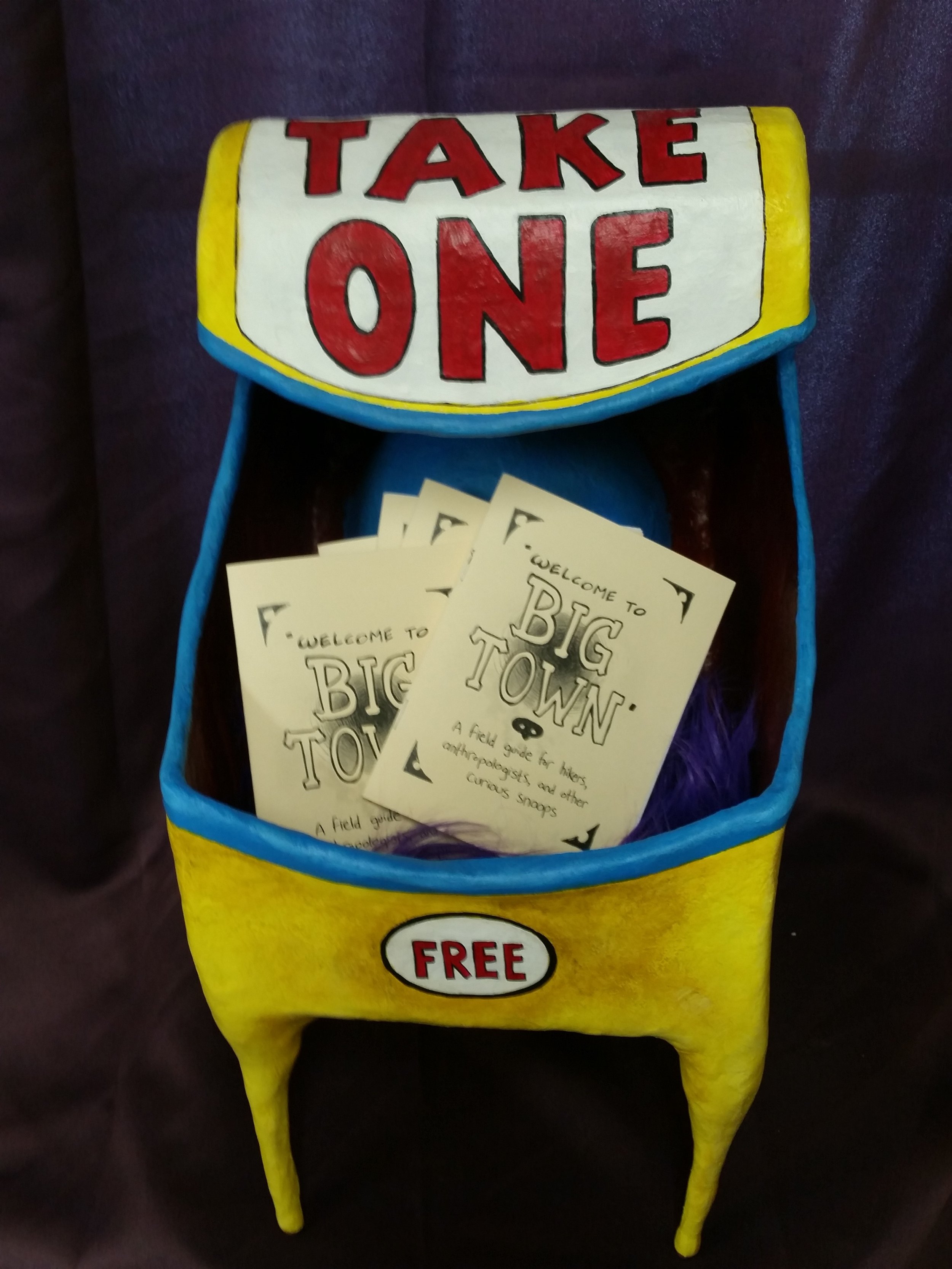


MISSING YOUR FACE: MASKS OF LOCATION, ISOLATION, AND TRANSFORMATION
ran from May 7 through July 3, 2021 at Art Center East in La Grande, Oregon





